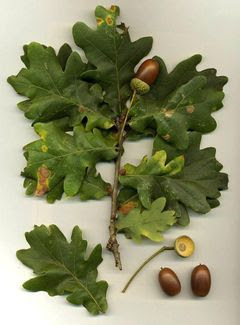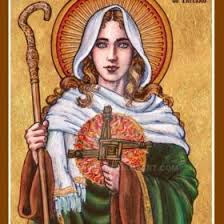I like Halloween, I always have and still do. Here is some basic data on this wonderful festival. The name Halloween is a contraction of the words 'All Hallows Eve.' This is a name created by Pope Boniface IV who proclaimed it 'All Saints Day' in AD 609. Hallow is an archaic word meaning 'Saint' or 'holy person.' The plural is Hallows.
From this we get to All Hallows Eve on 31 October and on 1 November we have All Hallows Day. But, there was already an important festival at this time. In the Isles, there was Samhain (said Sow-in). Samhain was a festival that dates to early pagan times and it was an old festival already when Pope Boniface attempted to claim it. In Gaelic, Halloween is still known by its real name, Samhain and Halloween night is Oiche Shamhna (said ee-ah how-na).
Samhain has a folk etymology that goes back to the middle Gaelic word Samain (also said Sow-in) meaning summer. But, that is a pseudo etymology, the real origin is from the Proto Celtic word 'Samoni,'which means 'assembly' in this case the gathering of the living and the dead, which happened on 31 October to the daybreak of 2 November. The 1st century BC Gaulish Coligny calendar marks the date. So even in ancient time the Celts already had Samhain as a major festival time.
Samhain was important to the ancient Celts as it marked the change of season, i.e. the start of winter. At this time the cattle herds went from summer pastures to their winter pastures. Very important to the pastoral people in the Isles. On Samhain people gathered, feasted, held contests, and there were rituals associated with this time. This change from light to dark, from summer to winter, marked a time when the portals between worlds, our world and the Otherworld, opened up. Beings and entities from the Otherworld could and did appear and walk about in our world.
These Otherworld beings included the Síthe (people of the mounds, also known today as the Fairies), the spirits of the dead, including one's ancestors, and other odd entities associated with the Otherworld. From ancient times to the present, it is in this context, that Samhain and 'Halloween' became the festival that we have today in the 21st century.
 |
| carving the Jack o'lantern |
The Gaelic people in Ireland and Scotland had many ways to commemorate Samhain. As already mentioned, the were assemblies, feasts, parties, bonfires, etc. People also practiced seership (divination), and the use of costumes and icons to protect themselves from any malicious entities that came into our world from the Otherworld.
Dagda, the Gaelic Sky Father, had control over time and the passages from our world to the Otherworld. Dagda is a psychopomp, i.e. a guide to souls to and from the place of the Dead. There were, and still are, bonfires lit up hills and mountains to commemorate Samhain. These fires were part of the rituals associated with this movement of entities between the world.
The Gaelic people also made toasts and left offerings to the Síthe. An example is seen in the Hebrides, on the island of the Lewis the population presented 'Seonaidh' with a cup of ale on the eve of Samhain. Seonaidh was a nickname for the Manannán, one of the Síthe, particularly revered in the Hebrides. This practice endured into the 20th century. Seonaidh is a taboo name, i.e. it was thought better not to say Manannán's name out loud. Important members of the Síthe often were known by pet names. Much like the Síthe themselves were often called Na Daoine Maithe (the good people) rather than their real name.
 |
| painting of Dagda by Howard David Johnson |
Samhain/Halloween is a time of heightened spiritual activity, a time when the passages between the worlds opens. It is a time to revere ancestors, to be cognizant of the Síthe.
 |
| Guardians of the home |
Samhain was brought to America via the many Irish and Scottish immigrants that came here. It has evolved into the modern Halloween and has become a world wide festival. It is good to remember its Gaelic origins. Many people, sadly most people, have little or no idea why we have all those curious customs associated with Halloween. The ghosts, the entities of the Otherworld, the feasts, candy, parties, bonfires, etc., have lost their meaning to many in our consumer, materialistic, post modern society. Too many people participate in Halloween not knowing what the festival is and the older spiritual connections.
I have placed a Jack o'lantern out, and I will welcome trick or treaters to my door. Later tonight I will have a fire in my large firepit, have a salutation to Dagda and my ancestors. I wish ever one a wonderful Halloween.
© 2022 Barry R McCain












